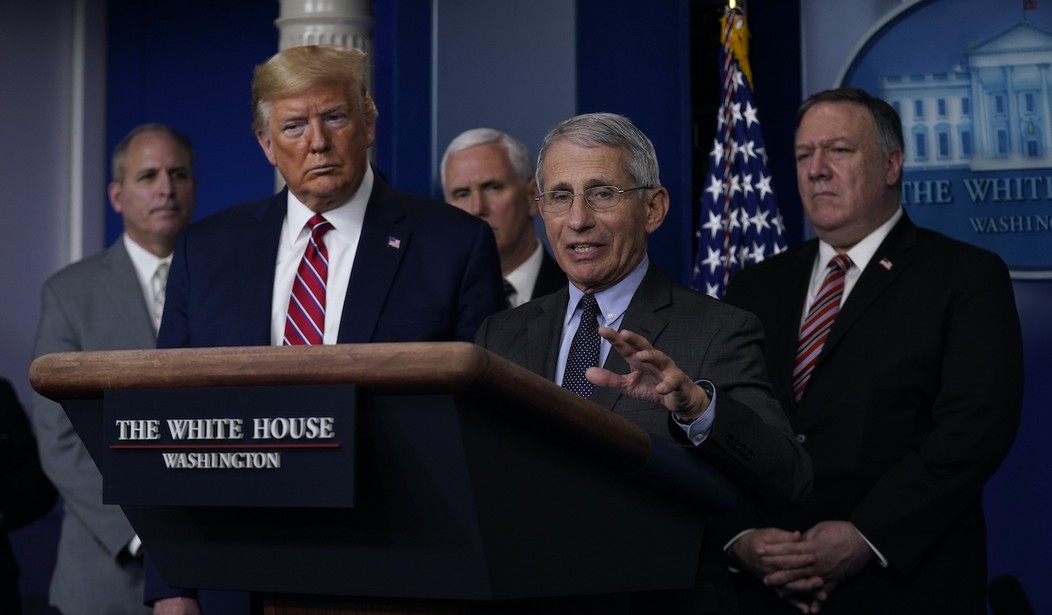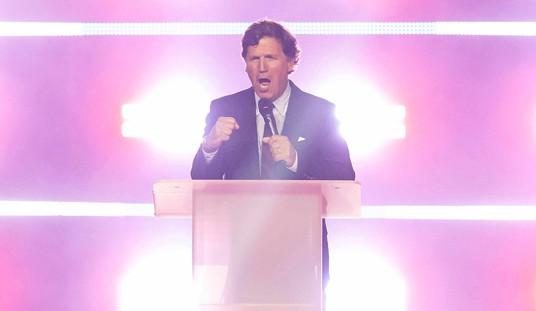Monday, the infamous left-wing group MoveOn began running a digital ad slamming President Trump for his administration’s “insufficient response to the Coronavirus pandemic” and encouraging voters to vote against him in November.
The ad features a timeline that gives viewers the impression that the government failed to adequately respond to the coronavirus.
“When faced with a pandemic, Trump’s incompetence and short-sighted choices cost American lives. He should’ve been taking action, but instead, Trump held rallies and played golf,” MoveOn alleges. The ads will run on Hulu and Facebook through June 15, and will be targeted to suburban women in Florida.
“The Trump administration’s handling of the Coronavirus pandemic has been one colossal dereliction of duty,” claims Rahna Epting, executive director of MoveOn. “The CDC issued a warning for U.S. clinicians on January 8th. The next day, Trump held a massive rally. In the weeks that followed, he played several rounds of golf, including the day after the WHO declared a public health emergency.”
RELATED: Obama Played Golf the Same Day His Administration Declared H1N1 a Public Health Emergency
The timeline featured by MoveOn does what most anti-Trump coronavirus timelines do: it ignores all the things that actually happened. Unfortunately for them, I’ve compiled a comprehensive timeline from various sources that lays out the Trump administration’s response in far more detail than they want you to see. As this timeline shows, the Trump administration responded quickly and decisively in the early weeks of the coronavirus outbreak, even as impeachment was underway. This timeline covers the moment China revealed the virus to the world up to the day Trump declared the coronavirus a national emergency. Events related to impeachment are in italics.
December 31: China reports the discovery of the coronavirus to the World Health Organization (WHO).
January 1: The Centers for Disease Control and Prevention (CDC) begins developing coronavirus situation reports and sharing them with the Department of Health and Human Services (HHS).
January 3: CDC Director Robert Redfield contacts George Gao, the director of the Chinese CDC, and formally offers to send U.S. experts to China to assist in coronavirus investigation.
January 3: Director Redfield speaks with HHS Secretary Azar, and HHS notifies the National Security Council (NSC).
January 4: Director Redfield sends another email to George Gao, once again offering assistance.
January 6: A formal letter to the Chinese CDC by Director Redfield is sent at the request of Secretary Azar.
January 6: A Level 1 Travel Watch for Wuhan, China, is issued by the CDC.
January 6: Anthony Fauci, the director of the National Institute of Allergy and Infectious Diseases (NIAID), starts doing interviews discussing the coronavirus outbreak.
January 6: The U.S. Senate returns from winter break.
January 7: The CDC establishes a Coronavirus Incident Management system in preparation for potential cases in the United States and to provide support for other countries upon request.
January 7: The House of Representatives returns from winter break.
January 8: The CDC issues an advisory via the Health Alert Network reporting that it was “closely monitoring a reported cluster of pneumonia of unknown etiology (PUE) with possible epidemiologic links to a large wholesale fish and live animal market in Wuhan City, Hubei Province, China,” and informed state and local health departments and health care providers about the outbreak.
January 9: The CDC and the Food and Drug Administration (FDA) begin collaborating on a diagnostic test.
January 10: China shared the viral sequence of the coronavirus. NIH scientists begin work on a vaccine.
January 11: The first known coronavirus death is reported by Chinese state media.
January 13: There are now 41 confirmed cases in China. The first case outside of China is confirmed in Thailand.
January 13: A pharmaceutical manufacturer is given the viral sequence by NIH.
January 14: The World Health Organization claims “there is no clear evidence of human-to-human transmission,” and that “no additional cases have been detected since 3 January 2020 in China.”
January 14: The NSC begins holding daily Novel Coronavirus Policy Coordination Council meetings.
January 15: The House of Representatives votes to send articles of impeachment to the Senate. Pelosi and House Democrats celebrate with a signing ceremony featuring commemorative pens.
January 16: The Senate impeachment trial of President Trump officially begins.
January 17: Enhanced screening of travelers from Wuhan at three airports is initiated. The following week two more airports are added, increasing coverage to 75–80 percent of travel from Wuhan, China.
January 17: The CDC hosts its first telebriefing on the virus. Dr. Nancy Messonnier, the Director of the National Center for Immunization and Respiratory Diseases (NCIRD), describes the coronavirus as “a serious situation” and says it’s “crucial to be proactive and prepared.”
January 17: The CDC posts interim coronavirus guidance for collecting, handling, and testing clinical specimens, and biosafety guidelines for laboratories. This guidance will be updated regularly over the course of the pandemic.
January 18: The CDC publishes interim guidance on how to care for in-home coronavirus patients not requiring hospitalization.
January 20: After previous denials, China confirms that the coronavirus can be transmitted human-to-human.
January 20: Dr. Fauci announces the National Institutes of Health is already working on a coronavirus vaccine.
January 20: The first confirmed case of the coronavirus in the United States is reported to the World Health Organization.
January 21: The first case of the coronavirus is confirmed in Washington state. The patient had been at Wuhan, China.
January 21: The CDC activates its Emergency Operations Center to support the coronavirus response.
January 21: The Biomedical Advanced Research and Development Authority (BARDA), which is part of the Department of Health and Human Services, begins market research calls with top diagnostics companies about developing diagnostics for the coronavirus.
January 21: In the second CDC telebriefing on the coronavirus, NCIRD director Dr. Messonnier says the CDC is “proactively preparing for an introduction of the virus here” and reports that a CDC team has been deployed to Washington state.
January 21: The CDC publishes interim guidance on preventing the spread of the coronavirus in homes and other places.
January 22: CDC Director Redfield writes in a memorandum that it was determined the coronavirus could become an infectious disease emergency very quickly. The memorandum is signed by HHS Secretary Azar, allowing HHS to request access from the Office of Management and Budget to $105 million in the Infectious Disease Rapid Response Reserve Fund.
January 22: For the first time, an authorization application template is shared by the FDA with a diagnostic test developer.
January 22: An interagency diagnostics working group is set up by the Office of the Assistant Secretary for Preparedness and Response (ASPR), which includes, BARDA, CDC, FDA, NIH, and the Department of Defense (DOD).
January 22: Children referred from China are now screened by the HHS Office of Refugee Resettlement. Children potentially exposed to the coronavirus are quarantined for up to 14 days before placement in shelters.
January 22: The rules of the impeachment are approved by the Senate. Impeachment managers begin their three days of opening arguments.
January 23: The CDC seeks a “special emergency authorization” from the FDA to allow states to use their coronavirus test.
January 23: China closes off the city of Wuhan.
January 23: ASPR convenes a Disaster Leadership Group (DLG) to coordinate strategies and countermeasures government-wide. The Trump administration begins discussions with manufacturers of N95 masks about more than doubling usual production.
January 24: Impeachment managers conclude their opening arguments on both articles of impeachment.
January 24: Three government-wide task forces are formed by ASPR: (1) healthcare system capacity and resilience, (2) development of medical countermeasures, and (3) supply chains.
January 24: The second confirmed U.S. case of the coronavirus is confirmed in Illinois by the CDC.
January 24: Dr. Messonnier reports during the third CDC-hosted telebriefing that more cases of the coronavirus are expected in the United States via travel and human-to-human transmission.
January 24: The CDC’s assay for the coronavirus is shared publicly. This design can now be used by the global community to develop their own assays.
January 25: President Trump’s legal defense begins opening arguments in the impeachment trial.
January 25: Secretary Azar notifies Congress of his intention to use $105 million from the Infectious Disease Rapid Response Reserve Fund.
January 26: There are now five confirmed cases in the United States.
January 26: ASPR’s three task forces hold their first meetings.
January 27: Secretary Azar discusses the coronavirus situation with China’s Minister of Health and World Health Organization Director-General Tedros.
January 27: Secretary Azar reports in a speech in Washington, D.C., that the Department of Health and Human Services is “proactively preparing for the arrival of the novel coronavirus on our shores,” and that it poses a “serious public health threat.”
January 27: Dr. Messonnier warns new travel recommendations are imminent and that the public health response may cause “some disruptions” in Americans’ lives during the CDC-hosted telebriefing.
January 27: The CDC issues a Level 3 Travel Health Notice warning Americans to avoid nonessential travel to China.
January 27: Developers of vaccines, therapeutics, diagnostics and other countermeasures for the coronavirus start receiving updates on the processes for approval and authorization.
January 27: Jay Butler, the CDC’s Deputy Director for Infectious Diseases, holds a conference call with the nation’s governors about the coronavirus.
January 27: The White House Coronavirus Task Force holds its first meeting.
January 28: During an HHS press briefing with Dr. Fauci, Director Redfield, and Dr. Messonnier, Secretary Azar warns that “Americans should know that this is a potentially very serious public health threat.”
January 28: The CDC posted interim coronavirus guidance for airline crews. This guidance would be updated regularly over the course of the pandemic.
January 28: President Trump’s legal defense team completes their opening arguments.
January 29: The White House publicly announces the formation of the Coronavirus Task Force. Trump chairs a meeting of the task force for the first time.
January 29: Dr. Messonier reports in the CDC-hosted telebriefing that no new cases of the coronavirus have been found in the United States, “despite an aggressive public health investigation.
January 29: The CDC posts recommendations for controlling and preventing coronavirus infection in healthcare settings.
January 29: The Chinese government acknowledges the offer of assistance of U.S. experts by HHS.
January 29: A listening session hosted by ASPR, CDC, FDA, NIAID, and DOD is held with 1,468 industry representatives to discuss the development of medical countermeasures, health system preparedness, supply resilience, and medical surge needs.
January 29: Repatriation of Americans from China begins.
January 29: U.S. senators begin two days of questioning in the impeachment trial.
January 30: The World Health Organization declares a global health emergency.
January 30: The CDC confirms the first case of human-to-human transmission of the coronavirus in the United States.
January 30: The State Department issues a Level 4: Do Not Travel Health Advisory for all of China. The CDC issues their own warning, saying travelers should “avoid all nonessential travel to China.”
January 30: The Trump Administration hosts a conference call with the nation’s governors, Secretary Azar, Director Redfield, Dr. Fauci, and others. The administration’s action plan for responding to the coronavirus outbreak is presented.
January 30: Budget officials in the Trump administration begin discussions on funding medical necessities for the outbreak, including medical supplies and equipment, supplying the Strategic National Stockpile and aid for states.
January 30: A coronavirus portal is launched by ASPR to facilitate requests from private industry interested in developing and/or manufacturing medical countermeasures.
January 31: The Trump administration declares the coronavirus a Public Health Emergency.
January 31: President Trump restricts travel with China, effective February 2.
January 31: Former Vice President Joe Biden calls Trump’s travel ban “hysterical xenophobia” and “fear-mongering.”
January 31: Dr. Messonnier discusses reports of asymptomatic transmission of the coronavirus during a CDC-hosted telebriefing. “We are preparing as if this were the next pandemic,” she says.
January 31: The Department of Homeland Security (DHS) begins funneling all flights from China to just seven airports for enhanced screening.
January 31: The emergency use authorization application process is discussed during a virtual meeting between the FDA and the American Clinical Laboratory Association.
January 31: The Senate votes 51-49 against more witnesses and documents in the impeachment trial.
February 2: The first death outside China is reported, coming from the Philippines.
February 2: Enhanced entry screening by the CDC is expanded to eight major airports.
February 3: A CDC team is ready but waiting for permission from the Chinese government to enter the country.
February 3: Closing arguments in the Senate trial of President Trump are made.
February 4: The FDA is directed to step up coronavirus diagnostic testing procedures by the White House
February 4: President Trump delivers his State of the Union Address. During the speech he vows to “take all necessary steps” to protect Americans from the coronavirus. Nancy Pelosi rips up the speech.
February 5: In a public statement, the CDC reports they believed the immediate risk of coronavirus exposure in the United States is low, and that they are “undertaking measures to help keep that risk low.”
February 5: President Trump is acquitted on both articles of impeachment.
February 5: The House Foreign Affairs Subcommittee on Asia begins hearings on the coronavirus.
February 6: The CDC begins shipping CDC-Developed coronavirus test kits to domestic and international labs.
February 9: Governors are briefed by the White House Coronavirus Task Force briefed at the National Governors’ Association Meeting in Washington.
February 11: ASPR expands their partnership with Janssen Research & Development to accelerate the development of a coronavirus vaccine.
February 12: The United States ships coronavirus testing kits to roughly 30 countries.
February 12: The CDC is still waiting for permission from the Chinese government to travel to China.
February 14: Dr. Messonnier reports that the CDC has begun working with five public health labs to conduct “community-based influenza surveillance” to monitor the spread of the coronavirus and conduct tests.
February 17: Dr. Fauci says that the risk of coronavirus infection in the United States is “minuscule.”
February 18: HHS announces it had engaged with the vaccines division of the multinational pharmaceutical company Sanofi to quickly develop treatments and a vaccine for the coronavirus.
February 18: Airlines are now required by the CDC to collect information on passengers who came from or were in China within 14 days of their attempt to enter the United States.
February 20: 77,000 cases are confirmed worldwide, according to the W.H.O.
February 22: International experts from the W.H.O. arrive in Wuhan, China.
February 24: The Trump Administration requests at least $2.5 billion from Congress for combatting the coronavirus.
February 24: Nancy Pelosi tours San Francisco’s Chinatown to quell fears about the coronavirus.
February 25: Secretary Azar discusses the Trump administration’s coronavirus response in testimony before the United States Senate Committee on Health, Education, Labor and Pensions.
February 29: The first known death from the coronavirus is recorded in the United States.
February 29: The Trump administration rolls back Obama-era regulations in order to speed up coronavirus testing.
February 29: The Trump administration suspends travel with Iran, bans foreign citizens who visited Iran in the previous two weeks from entering the United States, and announces a Level 4 Travel Advisory to Italy and South Korea.
March 2: President Trump meets with top pharmaceutical companies to coordinate plans to efficiently develop treatments and a vaccine for the coronavirus.
March 3: Federal restrictions on coronavirus testing are lifted, allowing any American to be tested for coronavirus upon a doctor’s orders.
March 4: Approximately 500 million N95 respirators are purchased by the Trump administration over the next 18 months.
March 4: $35 million is allocated to the CDC to help state and local communities most impacted most by the coronavirus.
March 6: President Trump signs an $8.3 billion emergency funding package to fight the coronavirus.
March 9: President Trump proposes a payroll tax cut to help workers during the coronavirus outbreak.
March 10: Top health insurance companies commit to waiving co-pays for coronavirus testing after a meeting with President Trump and Vice President Pence.
March 11: The World Health Organization declares the coronavirus a worldwide pandemic.
March 11: President Trump announces that travel from Europe will be restricted.
March 11: President Trump directs the Small Business Administration (SBA) to give low-interest loans to small businesses affected by the coronavirus outbreak, and asks Congress to increase the SBA lending fund by $50 billion.
March 11: President Trump instructs the Treasury Department to defer tax payments for individuals and businesses impacted by the coronavirus for three months without interest or penalty.
March 13: President Trump declares the coronavirus a national emergency, providing access to $42 billion in funds to combat the coronavirus.
March 13: President Trump announces plans to partner with the private sector to set up drive-through coronavirus testing sites.
March 13: President Trump announces that interest on federal student loans would be waived during the pandemic.
March 13: President Trump directs the Department of Energy to buy oil for the Strategic Petroleum Reserve.
March 13: The FDA gives emergency approval to Roche AG and Thermo Fisher for their coronavirus tests.
March 13: HHS announces it is funding the development of two new rapid diagnostic tests.
Sources for this timeline include The Federalist, Breitbart, the Trump campaign, PolitiFact, Wikipedia, The New York Times, NBC News, and Fox News.
_____
Matt Margolis is the author of the new book Airborne: How The Liberal Media Weaponized The Coronavirus Against Donald Trump, and the bestselling book The Worst President in History: The Legacy of Barack Obama. You can follow Matt on Twitter @MattMargolis










Join the conversation as a VIP Member